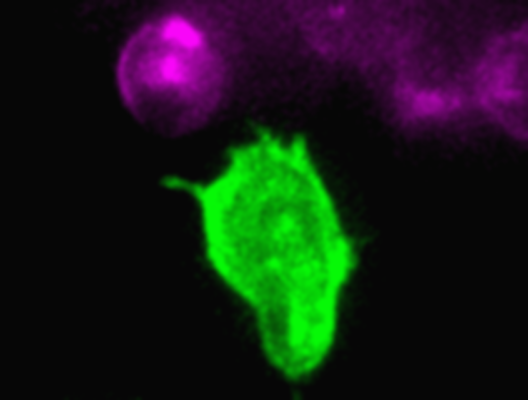Chemical Cues Give Germ Cells a Sense of Direction

During embryonic development, cells of the forming body migrate to position themselves in the right place within a tissue. This migration is of special interest to scientists Dana Meyen and Professor Erez Raz and colleagues from the Center for Molecular Biology of Inflammation and the Cells-in-Motion Cluster of Excellence at the University of Münster. This group studies the migration of primordial germ cells in zebrafish embryos, which eventually become ovules or sperm. The migration of these cells is controlled by chemical cues that create a concentration gradient within the tissue, and this gradient guides the germ cells towards their target. However, these scientists have now demonstrated that these cues specifically dictate the creation, distribution and characteristics of the finger-like extensions – called filopodia – that allow cells to move during migration. In addition, they found that these filopodia also influence the cell’s polarization. In other words, filopodia can “sense” these chemical signal cues, similar to how our noses identify smells. They “smell” where the scent is most intense and then move the cell in that direction, thereby presenting one side of the cell as the “front” and establishing the cell’s polarity.
Publication
Meyen D, Tarbashevich K, Banisch TU, Wittwer C, Reichman-Fried M, Maugis B, Grimaldi C, Messerschmidt E-M, Raz E. Dynamic filopodia are required for chemokine-dependent intracellular polarization during guided cell migration in vivo. Elife 2015;4 Abstract

